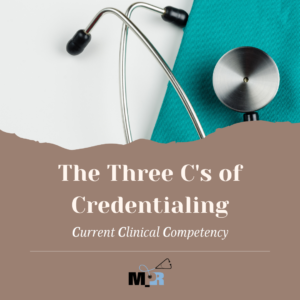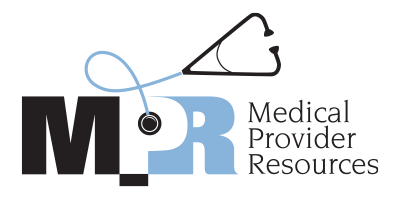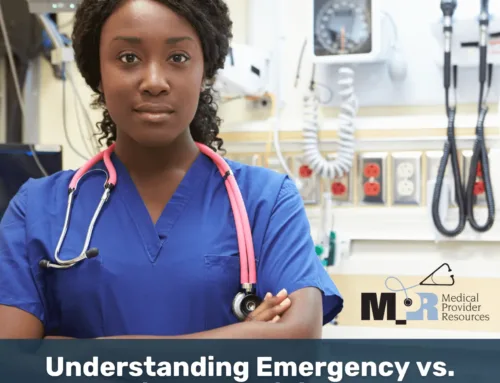Why do we credential providers? It begins with three words…current clinical competency. We call these the “Three C’s of Credentialing.” And these three C’s are universal to any credentialing model and apply to all licensing and accreditation requirements.
At MPR we have clients across the Midwest with varying licensing and accreditation standards. Some clients are accredited by The Joint Commission (TJC), while other clients are accredited by the Health Facilities Accreditation Program (ACHC). There are others such as Det Norske Veritas (DNV) and our ambulatory surgery centers are accredited by the Accreditation Association for Ambulatory Health Care (AAAHC). Most of our critical access hospitals (CAH) are licensed by the Centers for Medicare & Medicaid Services (CMS). The common denominator in all these licensing and accreditation requirements is current clinical competency.
At MPR we verify current clinical competence in two different methods: 1) through primary source verification of education and training and 2) through professional peer references. Each verification requires the responding provider/entity to attest to the current clinical competency of the provider in the verification of observing, instructing, or training.
 *Primary source verification is essential for patient safety at any healthcare organization. By properly verifying provider information, healthcare organizations can know those providers meet specific standards to treat patients. Suppose a healthcare organization does not correctly credential their provider, and adverse outcomes arise that would have been revealed by proper credentialing that the organization did not perform. In that case, it directly jeopardizes patient safety, and the organization may face negligent credentialing lawsuits.
*Primary source verification is essential for patient safety at any healthcare organization. By properly verifying provider information, healthcare organizations can know those providers meet specific standards to treat patients. Suppose a healthcare organization does not correctly credential their provider, and adverse outcomes arise that would have been revealed by proper credentialing that the organization did not perform. In that case, it directly jeopardizes patient safety, and the organization may face negligent credentialing lawsuits.
The Joint Commission requires primary source verification of professional and clinical performance that must include peer references and suggest using 6 general competencies for evaluation. MPR has adopted these 6 general competencies and requests them on all of our professional peer reference letters.
Another method of providing documentation to prove current clinical competency is the case logs/activity logs of the provider. These are required for the initial appointment process and the reappointment process as proof of ongoing clinical competence.
In the past, hospital affiliation requests were used to verify current clinical competency, but what we are finding is the verification responses have been deduced to form letters stating staff category and beginning and ending dates of appointment. This is true industry-wide and a true testament to the tremendous workload the medical staff services departments have around the country.
While MPR doesn’t decide what privileges a provider receives at the facility, we are instrumental in providing documentation to assist the facility in making quality decisions about granting clinical privileges.
*Department of Veteran Affairs. (2021, September 15). VHA directive 1100.20 credentialing of health … – va.gov. Credentialing of Health Care Providers.



